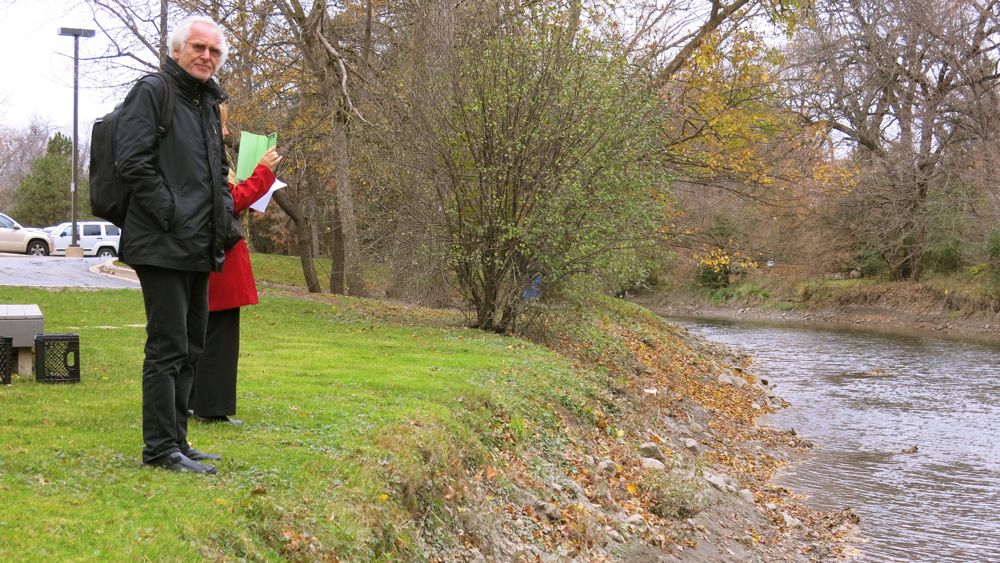In the afternoon pre-conference session of the Religious Education Association 2014 conference, Eileen Daily of Boston Univeristy and Daniella Zsupan-Jerome of Loyla University presented a workshop titled “Teaching and Learning in Online Spaces: An Experiential Engagement with Digital Creativity.”
While online media are new, Daily reminded us that religions have always used mediated forms of communication. “What did Paul do? He wrote letters!” she said. “Email is just another form of letter,” she added. “These are just new names for things we’ve been doing for a long time. There’s a difference of form, but there’s not necessarily a difference of message.”
Daily told us that when she teaches religious education online, she emphasizes nonlinearity. Whereas face-to-face learning environments lend themselves to a linear path through a subject, online environments lend themselves to a nonlinear approach. However, you still have to pay careful attention to course structure; there is a “Skinnerian side of education,” so there’s always a sense in which you have to “keep students in the rat maze” to produce behavioral outcomes. And Daily reminded us that the goal of any religious education is to “integrate religion into people’s messy lives.”
Daily and Zsupan-Jerome then led us in “a mini non-linear learning event that will appear on a curated platform at the end of the session.” As a subject for this experience in non-linear online learning, Daily and Zsupan-Jerome had us investigate the Salt Creek watershed; Salt Creek runs immediately behind the conference hotel. They split us into six groups, each group charged with investigating the environmental challenges facing Salt Creek through different approaches. Thus one group conducted Skype interviews with people who knew about Salt Creek; one group investigated sacred texts on the subject of the environment; another group researched specific environmental challenges facing Salt Creek today; etc.
Five of the groups did their work from inside the hotel. I joined the group assigned to take photos and videos of the actual creek. Four of us went out into the chilly 30 mph wind to take photos and videos.
When the group reconvened, Daily and Zsupan-Jerome told us to put a brief presentation of our findings on tackk.com, which bills itself as “a simple way to create beautiful pages on the Web.” While two members of our group uploaded video onto Youtube, Matthias and I selected six photos, processed and uploaded them to tackk.com, and wrote captions for each photo. You can see our online photo essay here. Other groups’ presentations may be found here (note that if you don’t have an account with them, tackk.com removes your Web page in 7 days, so some of these presentations will disappear soon).
With these presentations complete, Daily and Zsupan-Jerome invited us to log in to a Web conference hosted on Adobe Connect. They talked about how to structure online discussions. Zsupan-Jerome said she tends to be more structured in online discussions — she used the term “hyperstructured” — to help those students who may not be comfortable in online learning settings. Daily, by contrast, said she is willing to “let the conversation flow more.” However, she added, “you kind of have to be a little more structured than you would in a classroom.”
I found it very useful to be able to participate in a nonlinear online learning exercise, while listening to the teachers reflect on what they were doing and why they were doing it. I was interested to see that there was not a lot of participation in the actual online learning exercise — I was the only person who commented on the tackks, or who used the comment function of Adobe Connect — and I suspect that the face-to-face aspects of this workshop proved more engaging to most of the participants than the online aspects.

Above: Matthias, and Aldonna (in red) taking video of Salt Creek
